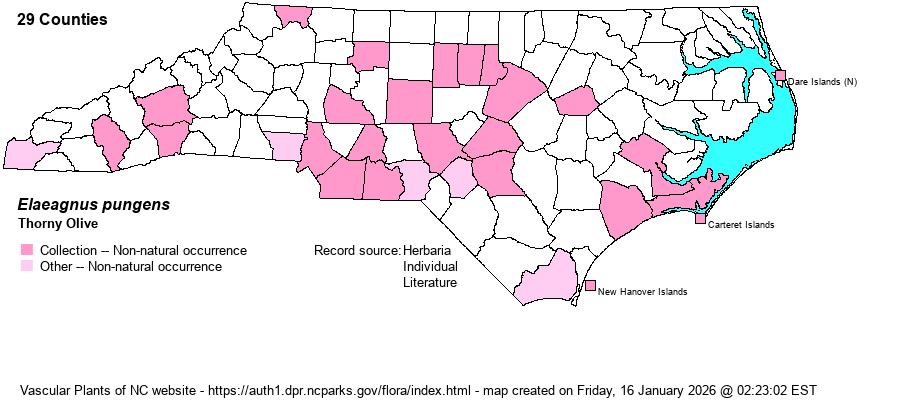| Author | Thunberg | |
| Distribution | Across the state, but with sizeable gaps. However, these gaps will likely narrow in the future with additional collecting.
Native of Japan; in N.A. MD and KY to FL, TX, OK. | |
| Abundance | Uncommon to fairly common in the Piedmont and Sandhills; apparently rare in the Mountains and outer Coastal Plain. | |
| Habitat | Roadside thickets, disturbed woods, maritime dunes, bottomlands, alluvial woods, tidal swamp forest (Onslow Co.). Extensively planted as a privacy hedge in recent decades. Normally not a problem species, as far as escaping into natural habitats. |
| Phenology | Flowering October-November. | |
| Identification | Thorny Olive is our only autumn-flowering Elaeagnus. It usually has a rounded, shrubby shape, often attaining 10 or more feet tall, with arched branches and many rather erect to ascending shoots haphazardly radiating. Leaves are mostly elliptical, the tip varying from rounded to narrowed to a drip-tip, generally evergreen, dark green above, and with silvery and coppery scales beneath. The flowers are relatively short, straw color to whitish, speckled with bronze scales on the outside. | |
| Taxonomic Comments | | |
| Other Common Name(s) | Silverthorn, Thorny Elaeagnus | |
| State Rank | SE | |
| Global Rank | GNR | |
| State Status | | |
| US Status | | |
| USACE-agcp | | |
| USACE-emp | | |

